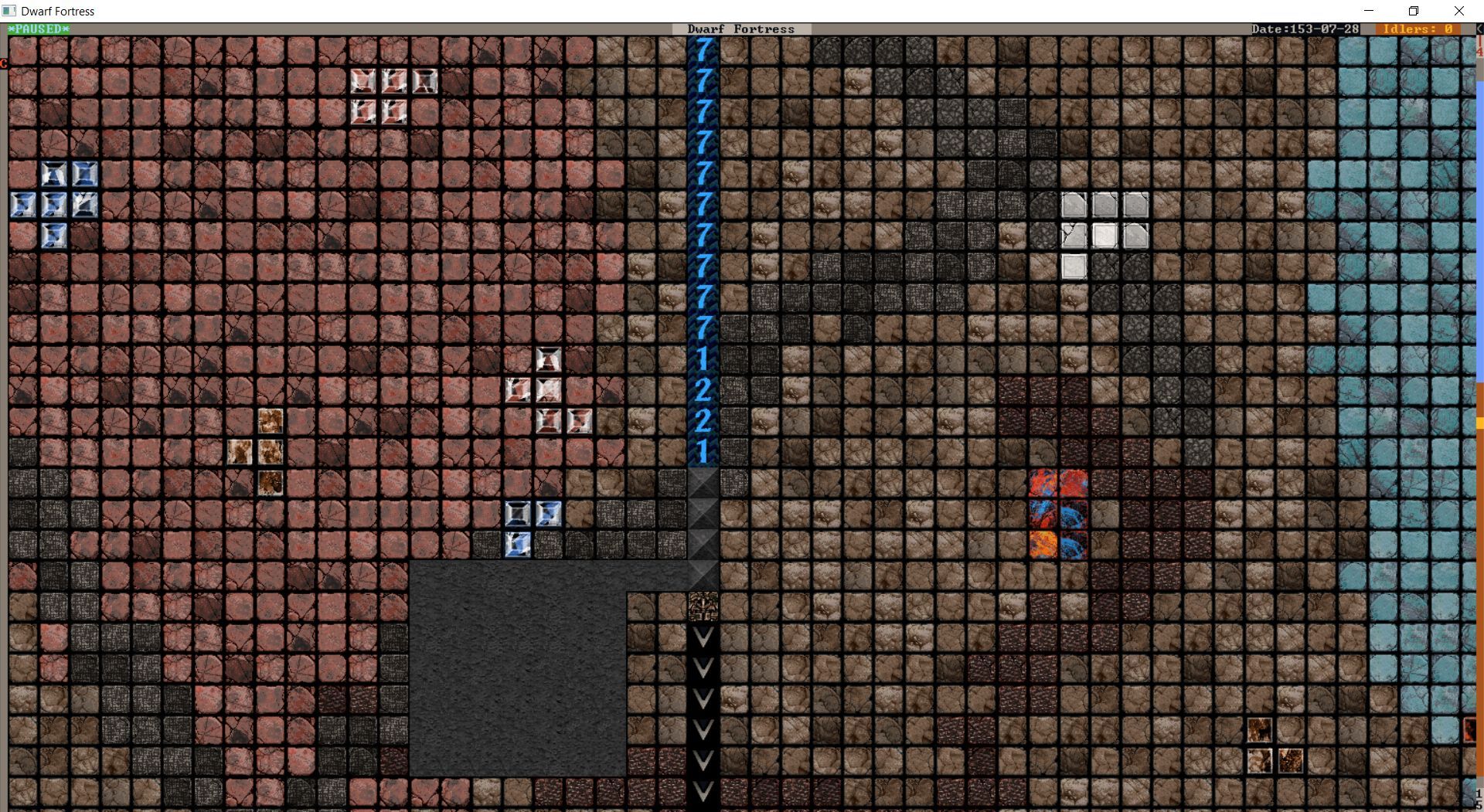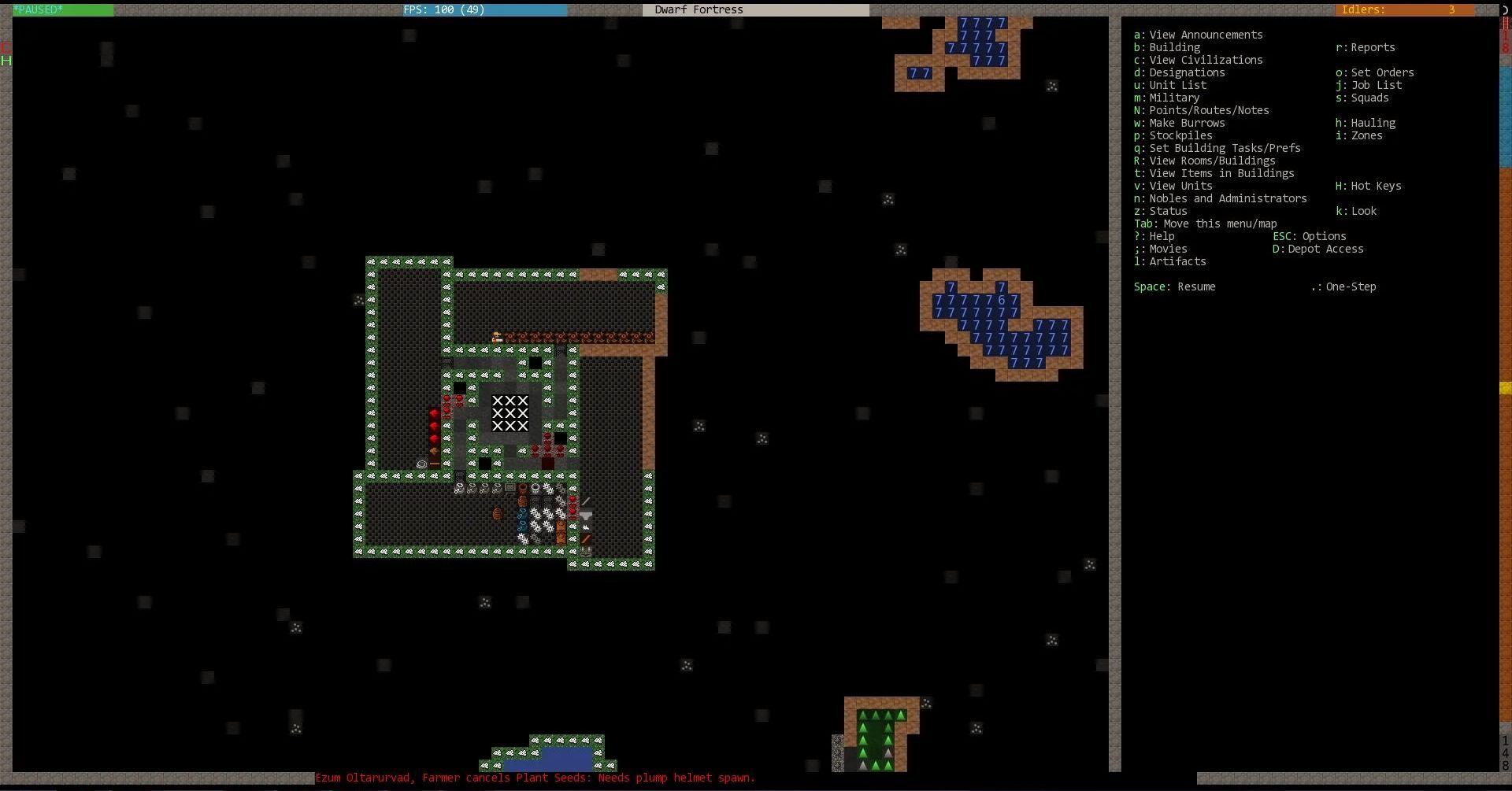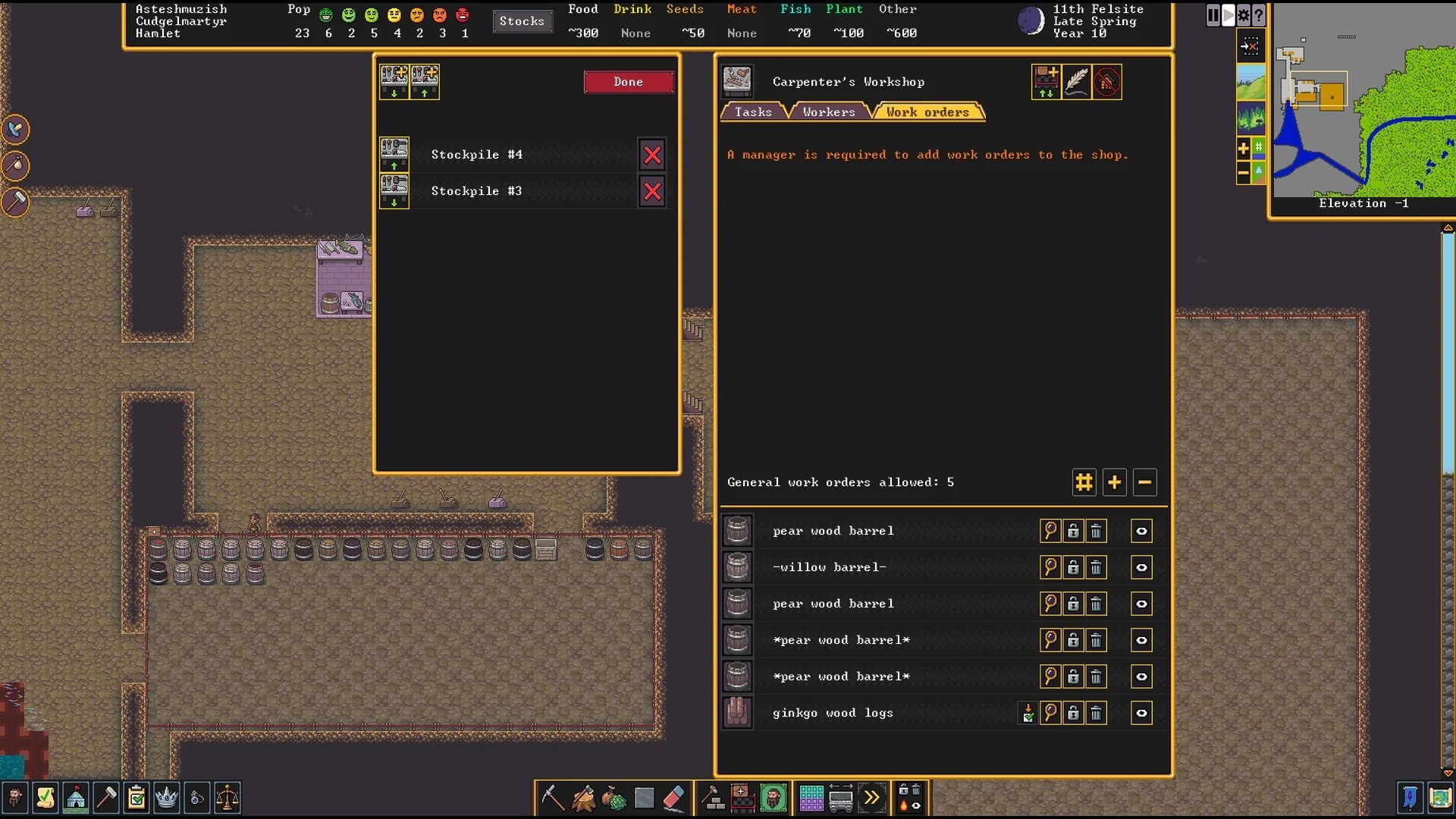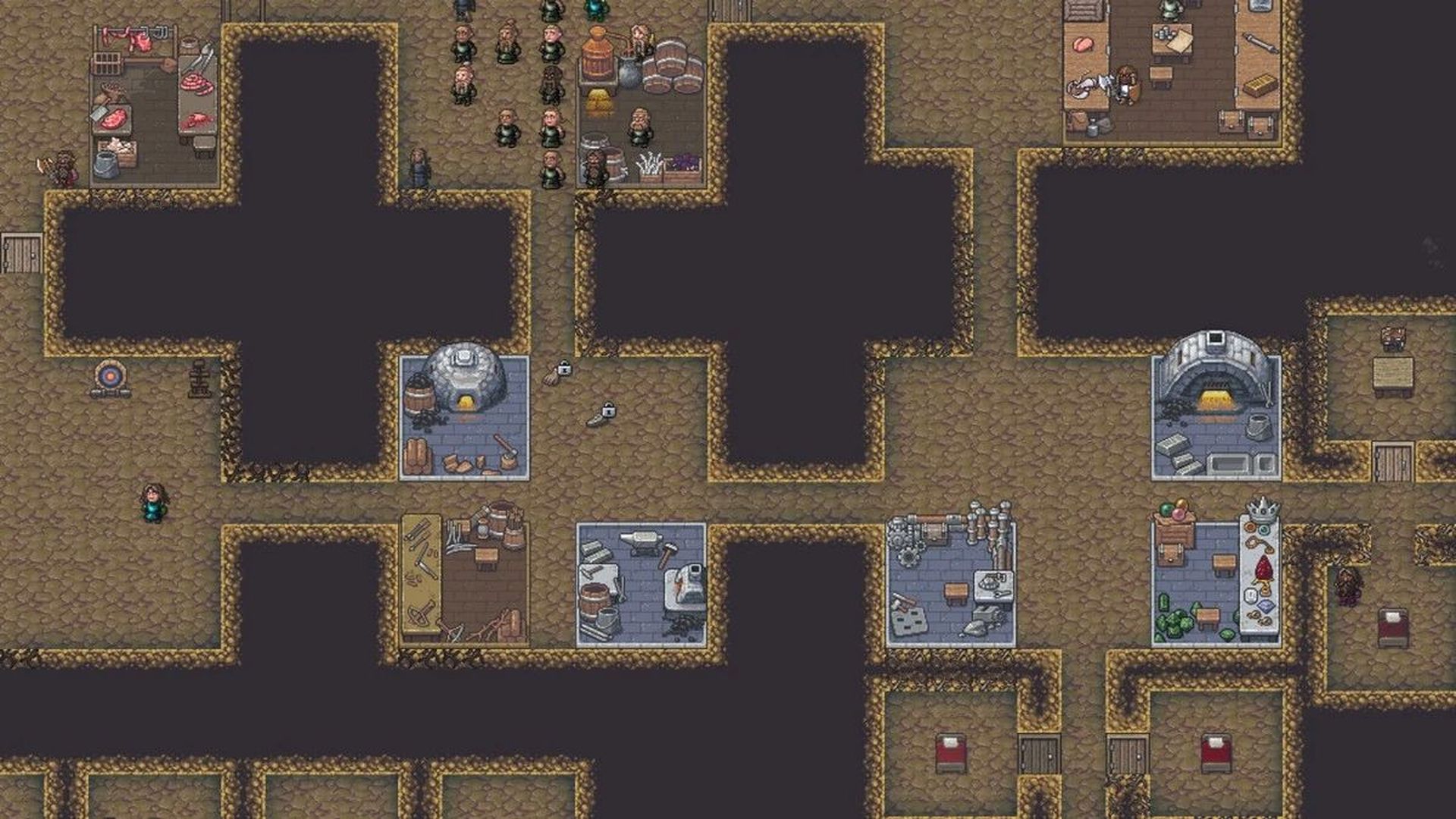In the intricate world of Dwarf Fortress storage management of stockpiles is crucial for maintaining a thriving and efficient fortress.
In this article, we delve into valuable tips and tricks to optimize your stockpiles, streamline storage areas, and create a seamless workflow. From underground stockpiles to specialized food storage and metal recycling techniques, discover the secrets to maximizing efficiency and ensuring your fortress thrives in the face of the challenges that lie ahead. Below, you can find the list of possible strategies to improve your Dwarf Fortress storage strategy, before moving on to a closer examination of each of them.
- Prioritize underground stockpiles
- Streamline wood storage
- Categorize less frequently used items
- Optimize food storage
- Utilize barrels and bins
- Implement production chain control
- Efficient metal management
- Streamline metal recycling
With that, let’s take an individual look at each of these methods.

How to optimize Dwarf Fortress storage?
Efficient storage management is a critical aspect of mastering Dwarf Fortress. By implementing smart strategies and organizational techniques, you can streamline your storage areas, maximize space utilization, and enhance resource accessibility. Check out different ways to optimize Dwarf Fortress below and begin applying them in your game as soon as possible.
Prioritize underground stockpiles
One effective strategy is to start with a large underground stockpile for all items, except for stone, wood, and mechanisms. By establishing this initial stockpile early on, you can quickly move resources underground, keeping your fortress clutter-free and organized.

Streamline wood storage
Create a larger wood stockpile near the entrance of your fortress to collect freshly cut logs. This centralized location ensures efficient collection and prevents unnecessary hauling across the map. Additionally, consider setting up smaller stockpiles with selected wood types closer to carpenter workshops for easy access and improved workflow.
Categorize less frequently used items
To declutter your main stockpile, create smaller dedicated stockpiles for items that won’t be utilized frequently. Gems, cloth, and leather can be stored in smaller designated areas, such as future bedrooms, arranged in aisles. A compact 3×4 space is usually sufficient in the early stages.
Optimize food storage
Food should be the first category to separate early on. Create dedicated stockpiles for drinks and prepared meals near your dining area. Place the kitchen and still in proximity to these stockpiles, with larger input stockpiles on the floor above or below. Establish separate stockpiles for meat, plants, cheese, and eggs, ensuring a streamlined workflow. Consider having a nearby furniture stockpile specifically for barrels.

Utilize barrels and bins
Efficiently utilize barrels and bins to compress and store various resources. Create barrels for gems, cloth, and food items. However, it’s important to note that a general seed storage area should not allow any barrels. Instead, establish dedicated seed stockpiles organized with a collecting stockpile without barrels, which feeds into a small long-term storage stockpile with barrels enabled. This arrangement saves space and improves Dwarf Fortress storage strongly.
Implement production chain control
For more complex production chains, such as metal or cloth industries, consider using “give to” stockpiles to control material flow. Workshops that require resources from a specific stockpile should be set to take every resource from a designated giving stockpile. For example, a wood furnace can have a dedicated wood stockpile feeding it, while a separate stockpile for charcoal is placed nearby. This ensures a steady supply of materials and efficient production.
Efficient metal management
When it comes to metal production, sorting what needs to be melted from what should be kept becomes crucial. Aim to acquire steel as soon as possible, as it offers superior quality. Set up small dedicated stockpiles for top-quality steel weapons and armor (1×4 in size), while a “steel scrap stockpile” accepts lower-quality steel items for smelting. Additionally, create a “metal scrap stockpile” for non-steel and non-artifact metal weapons and armor. Use wood bins to designate items for melting.

Streamline metal recycling
If you come across goblinite or non-usable steel items, consider setting up a designated non-scrap stockpile for recycling. However, be cautious with managing the influx of different metal bars. Collect them initially in a larger stockpile and separate them later. Dedicate separate stockpiles for iron and steel, as they are often in high demand, while other metal bars can be stored further away in long-term storage. Consider utilizing copper or brass barrels if wood is scarce.
By implementing these tips and tricks for stockpiles and Dwarf Fortress storage, you can enhance the efficiency of your fortress, minimize clutter, and ensure smooth resource management. With proper organization and optimization, your dwarves will have everything they need to thrive in this intricate and challenging world.
If you really want to improve your gameplay, make sure to check out our article on tips, items, and more about Dwarf Fortress embark size.
Featured Image: Credit





